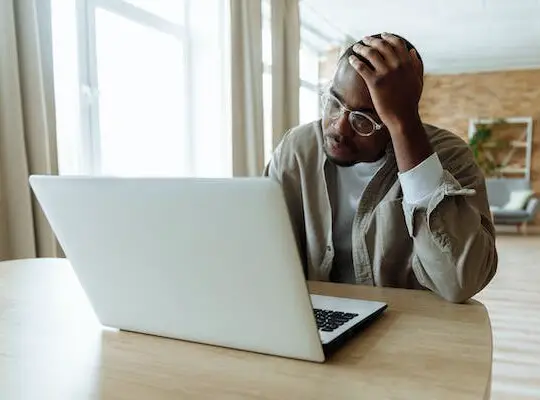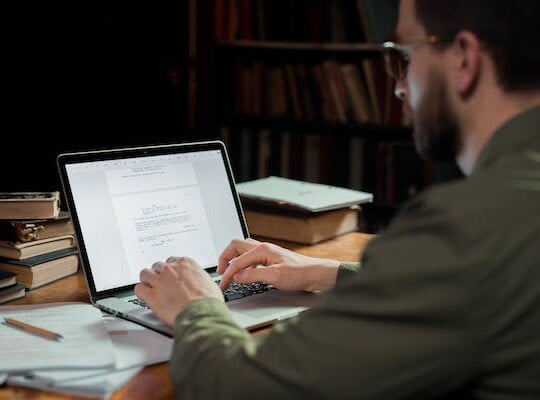Plumbing issues are a common occurrence in homes and can often catch homeowners off guard. When faced with a plumbing problem, it’s important to have an understanding of the costs involved in order to properly budget and plan for repairs. In this step-by-step guide, we will explore the various factors that influence plumbing costs and provide tips on how to estimate and save on these expenses.
Understanding the Basics of Plumbing Costs
Before delving into the estimation process, it’s crucial to grasp the fundamentals of plumbing costs. Plumbing services can encompass a wide range of tasks, including repairs, installations, and maintenance. Depending on the complexity and extent of the job, the costs associated can vary significantly.
Plumbing is an essential aspect of any building, whether residential or commercial. It ensures the proper functioning of water supply and drainage systems, providing convenience and comfort to occupants. However, when plumbing issues arise, it’s important to understand the factors that contribute to the costs involved.
Different Types of Plumbing Services
Plumbing services can be categorized into different types, each with its own cost considerations. Some common types of plumbing services include:
- Repairs: Fixing leaks, repairing damaged pipes, or replacing faulty fixtures. Plumbing repairs are often necessary due to wear and tear, aging infrastructure, or unforeseen accidents.
- Installations: Installing new pipes, fixtures, or appliances. This type of service is commonly required during renovations or when upgrading plumbing systems to meet modern standards.
- Maintenance: Regular maintenance to prevent future issues and extend the lifespan of plumbing systems. Maintenance tasks include inspections, cleaning, and minor repairs to ensure optimal performance.
Each type of plumbing service comes with its own set of challenges and considerations. Repairs may involve locating hidden leaks or accessing pipes within walls, while installations require careful planning and coordination to ensure compatibility with existing systems.
Factors Influencing Plumbing Costs
Several factors contribute to the overall cost of plumbing services. It’s essential to consider these factors when estimating the expenses:
- Location: The cost of plumbing services can vary depending on the geographical area and local labor rates. In densely populated urban areas, where demand is high, prices may be higher compared to rural areas.
- Type of Service: As mentioned earlier, the type of plumbing service required will impact the costs. Repairs tend to be less expensive than extensive installations. The complexity of the task and the time required to complete it also play a role in determining the cost.
- Materials and Fixtures: The quality and type of materials and fixtures chosen will affect the overall cost. Opting for higher-end materials will increase the expenses. However, investing in durable and reliable materials can save money in the long run by reducing the need for frequent repairs.
- Extent of the Problem: The severity of the plumbing issue and the level of complexity involved in fixing it will influence the cost. Simple repairs, such as fixing a minor leak, may be relatively inexpensive, while major pipe replacements or extensive system upgrades can be more costly.
- Accessibility: If the plumbing system is difficult to access, such as in older homes or tight spaces, additional labor may be required, which can drive up the costs. Plumbers may need to remove walls or floors to reach the problem area, resulting in more time and effort spent on the job.
It’s important to note that these factors are not exhaustive, and there may be additional considerations depending on the specific circumstances of the plumbing project. Consulting with a professional plumber and obtaining multiple quotes can help in getting a more accurate estimate of the costs involved.
Preparing for Cost Estimation
Before diving into the estimation process, it’s important to gather the necessary information and identify potential plumbing issues. This preparation will enable a more accurate estimate and better understanding of the costs involved.
When preparing for cost estimation, it is crucial to take a systematic approach. By following a step-by-step process, you can ensure that no important details are overlooked, leading to a more comprehensive estimate.
Gathering Necessary Information
Start by gathering all relevant information about the plumbing system in question. This includes the age of the system, previous repairs or installations, and any available documentation. By examining the history of the plumbing system, you can gain valuable insights into its overall condition and potential areas of concern.
Additionally, it is essential to gather information about the specific problem or area of concern. This could involve conducting interviews with the property owner or occupants to gather firsthand information about any plumbing issues they have noticed. By understanding the specific problem, you can tailor your estimate to address the root cause effectively.
Identifying Potential Plumbing Issues
Inspect the plumbing system thoroughly to identify any potential issues that may affect the estimation process. Look for signs of leaks, corrosion, or malfunctioning fixtures. Pay close attention to areas that are prone to plumbing problems, such as bathrooms, kitchens, and utility rooms.
During the inspection, it is important to document any visible issues or concerns. Take detailed notes and photographs to provide evidence of the problems you have identified. This documentation will not only help you in the estimation process but also serve as a reference point for future discussions with the property owner or other stakeholders.
In addition to visual inspection, it may be necessary to perform tests or measurements to assess the condition of the plumbing system accurately. This could involve conducting pressure tests, flow rate measurements, or using specialized equipment to detect hidden leaks. By utilizing these diagnostic tools, you can uncover underlying issues that may not be immediately visible.
Furthermore, it is crucial to consider the potential impact of external factors on the plumbing system. For example, if the property is located in an area with hard water, there may be a higher likelihood of mineral buildup or pipe corrosion. By taking these external factors into account, you can provide a more accurate estimate that considers the unique challenges posed by the property’s location.
In conclusion, thorough preparation is key to a successful cost estimation process in plumbing. By gathering all necessary information and identifying potential plumbing issues, you can ensure that your estimate is comprehensive, accurate, and tailored to address the specific needs of the plumbing system in question.
The Process of Estimating Plumbing Costs
Estimating plumbing costs requires a systematic approach to ensure accuracy and reliability. By breaking down the estimation process into steps and avoiding common mistakes, you can navigate the complexities of plumbing costs with confidence.
When it comes to estimating plumbing costs, there are several factors to consider. The extent and severity of the problem play a crucial role in determining the overall cost. Is it a minor repair or a major renovation? Evaluating the scope of the project will help you gauge the level of expertise and materials required.
Breaking Down the Cost Estimation Steps
Follow these steps to estimate plumbing costs:
- Evaluate the extent and severity of the problem. This involves a thorough inspection of the plumbing system to identify any underlying issues that may contribute to the problem at hand. It’s important to assess the complexity of the job and determine if any specialized skills or equipment are needed.
- Research local labor rates to get an idea of the hourly cost. Labor costs can vary depending on your location and the level of expertise required. It’s essential to gather information on prevailing rates to ensure that your estimate aligns with industry standards.
- Determine the necessary materials and their costs. Plumbing projects often involve the use of various materials, such as pipes, fittings, valves, and fixtures. Researching the prices of these materials will help you create a more accurate estimate. Additionally, consider any specialized tools or equipment that may be required for the job.
- Factor in any additional expenses, such as permits or disposal fees. Depending on the nature of the project, you may need to obtain permits from local authorities. These permits often come with associated fees that should be accounted for in your estimate. Additionally, if the project involves the removal of old plumbing components, disposal fees may apply.
- Calculate the labor and material costs to get an overall estimate. Once you have gathered all the necessary information, it’s time to crunch the numbers. Add up the labor costs, material costs, and any additional expenses to arrive at an accurate estimate. It’s always a good idea to include a contingency amount to account for any unforeseen circumstances that may arise during the project.
Common Mistakes to Avoid in Cost Estimation
When estimating plumbing costs, it’s important to be aware of common mistakes that can lead to inaccurate estimates. Some common pitfalls to avoid include:
- Underestimating the extent of the problem, which can result in unexpected additional costs. It’s crucial to thoroughly assess the situation and consider all potential complications that may arise during the project.
- Overlooking hidden issues, such as underlying leaks or deteriorating pipes. Sometimes, what may seem like a simple repair can uncover more significant problems. It’s essential to conduct a comprehensive inspection to identify any hidden issues that may impact the overall cost.
- Ignoring the need for permits or other regulatory requirements. Failure to obtain the necessary permits can lead to legal issues and potential fines. Always check with local authorities to ensure compliance with regulations.
- Not considering the long-term benefits of investing in higher-quality materials or fixtures. While it may be tempting to opt for cheaper options, investing in higher-quality materials and fixtures can save you money in the long run. They tend to be more durable and less prone to frequent repairs or replacements.
Tips to Save on Plumbing Costs
Plumbing costs can add up quickly, but there are several strategies you can employ to save money while still ensuring quality work:
When it comes to plumbing, prevention is key. Regular maintenance and preventive measures can help minimize the likelihood of major plumbing problems. This includes routine inspections, addressing minor issues promptly, and implementing water-saving practices. By taking these steps, you can catch potential issues early on and prevent them from turning into costly repairs.
However, it’s important to know when to call in the professionals. While some plumbing tasks can be tackled by homeowners with basic DIY skills, complex and extensive problems are best left to professional plumbers. Attempting to fix these issues yourself can lead to costlier repairs down the line. Hiring a professional from the start can save both time and money.
Professional plumbers have the knowledge, experience, and specialized tools to handle even the most challenging plumbing problems. They can accurately diagnose the issue, provide effective solutions, and ensure that the repairs are done correctly. By hiring a professional, you can have peace of mind knowing that the job will be done right the first time.
In addition to hiring a professional plumber, there are other ways to save on plumbing costs. One strategy is to compare quotes from multiple plumbers before making a decision. This allows you to find the best price for the services you need without compromising on quality.
Another way to save money is by being proactive about water conservation. Installing low-flow fixtures, such as faucets and showerheads, can help reduce water usage and lower your monthly water bills. Additionally, fixing leaks promptly and using water-efficient appliances can also contribute to long-term savings.
It’s also worth considering preventative measures such as insulating exposed pipes to prevent freezing during the winter months. Frozen pipes can burst and cause significant damage, leading to expensive repairs. By taking the time to insulate your pipes, you can avoid this potential disaster and save money in the process.
Lastly, staying informed about basic plumbing maintenance can help you catch small issues before they become major problems. Learning how to properly maintain your plumbing system, such as clearing clogged drains or replacing worn-out washers, can save you from having to call a plumber for minor repairs.
In conclusion, saving on plumbing costs is possible with a combination of preventive measures, hiring professional plumbers when needed, and being proactive about water conservation. By taking these steps, you can keep your plumbing system in good condition while also keeping your budget intact.
Conclusion: Navigating Plumbing Costs with Confidence
Estimating plumbing costs can be a daunting task, but with the right knowledge and approach, it becomes more manageable. Understanding the basics of plumbing costs, preparing for estimation, and following a systematic process will ensure more accurate estimates. By being mindful of potential mistakes and implementing cost-saving measures, you can navigate plumbing costs with confidence and make informed decisions when it comes to your home’s plumbing needs.




